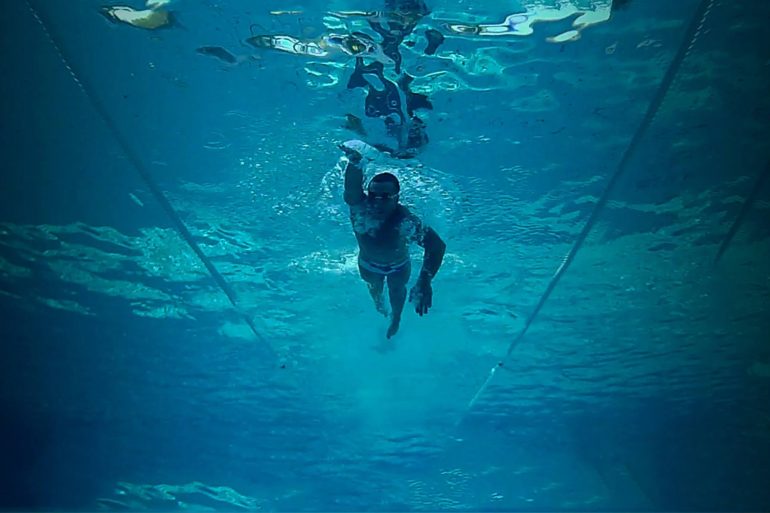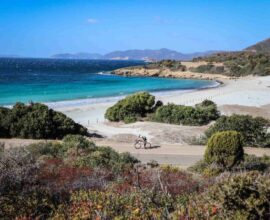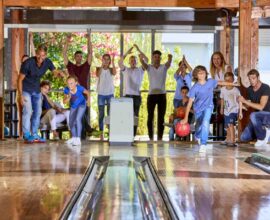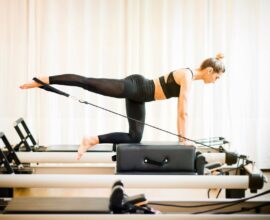The secrets of swimming: how to improve your skills and become faster
If you practice swimming, find out how to improve your skills for a successful performance
Positioning body, taking breathe under control, understanding and implementing feedback, working on synergy between strength, speed and endurance: here are the best advice to improve your swimming skills and be faster.
Swimming is much more than a simple sporting discipline: it is a real art, requiring a skillful combination of technique, endurance and concentration with a lot of passion and desire of constantly improving, breaking down the limits of the body and mind, in order to reveal abilities we didn’t even know about.
It is no coincidence that swimming is one of the most complete and rewarding sports you can practice: it’s an excellent form of aerobic training, a fun way to relax, re-balance yourself, and pause the endless stimuli coming from outside world focusing just on the swimming action. Learning how to control muscles of your legs and arms, how to breathe correctly, how to keep your focus on goal dealing with any unexpected events really requires great selective attention, therefore it leaves no room for external problems, fears and worries. In short, swimming can be a real panacea for both body and soul!
However, to make the most of this sport and be able to practice it safely, it is key to master its technical basics and learn about the secrets to become faster and swifter in water. Refining your swimming skills and technique doesn’t simply concern professionals or people practicing it at a competitive level: as a matter of fact, even beginners can benefit a lot from greater awareness of their own breathing and body in the water, of different swimming styles, like backstroke, breaststroke, dolphin crawl and of course freestyle, each one with its own features. Moreover, it’s important to keep in mind that even apparently insignificant changes in your own style can lead to notable improvements in the final performance.
Following, here’s a list of the best tips by professional swimmers to achieve exceptional sporting performance, which you can immediately apply in our weekly training routine to improve your overall swimming skills and become faster; with a little patience, intensity and of course a good dose of consistency, improvements will be guaranteed in a few weeks!
Professionals advice to improve your swimming skills and speed
Every swimmer, whether beginner or professional, faces several challenges trying to perfect their own personal technique. Lack of coordination, difficulty in keeping a constant pace or correct position in water, they are certainly some problems that may seem difficult to overcome, with the possibility to even lead the aspiring swimmer to the will of giving up.
Fortunately, with the right dedication and approach, even the toughest obstacles can be successfully faced and overcome, resulting in a clear and relevant technical progress and above all strong self-gratification, the ultimate secret ingredient to keep motivation up looking for constant improvement.
Here are seven simple tips to improve your swimming experience, which if turned to practice in a well-planned training routine can really bring to tangible long-lasting results.
1. Be careful to your body position in water
Maintaining a correct body position is key to maximize the power of each stroke in water (and save enough energy for the next ones) and facilitate arms and legs coordination, reducing the risk of injury such as shoulder muscle tension, back or neck pain.
At the same time, it is not enough to just adopt the right position in water, but you also must commit to keep it for the entire duration of the training session. In particular, your head should be in a neutral position, well aligned with spine, and the look of your eyes should be directed towards the bottom of the pool, minimizing water resistance and improving your own physical hydrodynamics.
Speaking of positions and styles, there are some differences between freestyle and backstroke, yet between breaststroke and butterfly stroke: forwhat concerns the first two swimming styles, a flatter body position allows to slide better on the water (the simplest way to get a correct position is to imagine keeping your body as horizontal as possible, as if you’re trying to float on asurface with minimal resistance); instead, the other two styles require greater dynamism, for example practicing breaststroke head and chest rise slightly for breathing, whereas practicing butterfly stroke your body performs a particular waving movement – anyway, in both cases it is key striving to keep a stable body center-line and so reduce the resistance opposed by the water to your movement (therefore saving energy).
2. Improve breathing technique
Breathing is another fundamental aspect of swimming. In fact, good breathing technique can help to save energy and maintain a constant swimming rhythm, avoiding early fatigue. Although the best time to breathe varies depending on the swimming style you practice, it is important to learn how to maintain a constant oxygen flow without excessive interruptions, so how to breathe in a relaxed and rhythmic way absolutely avoiding holding your breath.
These basic rules must be adapted to your swimming style. For example, practicing freestyle a good and balanced breathing rhythm involves a breathe every three strokes, a method called bilateral breathing, that helps maintain a symmetrical movement and prevent muscle tension. In backstroke, in which your face is always out of water, it’s advisable to synchronize your breathing with the movement of your arms; instead, in breaststroke it is recommended to complete a full breathing cycle (inhalation and exhalation) for each stroke, raising your head only just enough to get some air, trying to keep good fluidity of movement. For what concerns butterfly stroke, you should breathe every two strokes, keeping your head down and reducing body lift to minimize water resistance. Keep in mind the importance of performing a complete exhalation underwater to avoid accumulating carbon dioxide in your lungs, responsible for that unpleasant feeling of breathlessness.
You should implement breathing exercises outside the water in your training routine regularly, to increase lung capacity and enhance breathing control. The best breathing exercises to practice aim to strengthen the diaphragm, the main muscle that regulates breathing cycle, located immediately below lungs at the junction between the thoracic and abdominal cavities. Another effective exercise refers to dry apnoea, to learn how to hold breath for increasingly longer periods of time, conditioning the body to improve its own tolerance to carbon dioxide and the ability to hold your breath for longer moving inwater.
3. Improve the arms movement
Each swimming style has a specific rhythm and technique for the movement of arms. For example, in freestyle arms perform a continuous and alternating movement, which is why it is good to concentrate attention on the entry of the hand into the water, on the downward traction, and on the final push towards the hips; in the backstroke, instead, the upper limbs move alternately with the rotation of the body, so it is useful to enter the water with the pinkie and push downwards forcefully to get some good propulsion.
In the breaststroke arms move simultaneously, therefore the practice should be bringing the hands towards the chest and then pushing them laterally and downwards, performing a sort of heart-shaped movement with the hands during the traction and keeping both elbows high. The same happens for the butterfly stroke, with the difference that the pull should be more powerful downwards, combined with a forceful push towards the hips.
Generally, integrating in your daily training specific strength exercises that simultaneously target arms, shoulders and core, such as dumbbell curls, shoulder press, push-ups and pull-ups can really make a difference in developing a more efficient and powerful stroke, thus improving movement skills, speed and endurance in water.
4. Train your legs, too
Although they’re often considered just a secondary part of body to train, legs give crucial support during the phases of swimming. Powerful and well balanced leg kicks (making sure they are coordinated with arms) is important to maintain a good body position, reduce the friction of the water, minimize energy output and enhance power and vigor to each stroke.
But still, different styles require to focus on different techniques. In freestyle and backstroke the legs kicks must be continuous and rapid, as legs must move from the hip with a fluid and controlled movement. In the breaststroke, however, the movement of the lower limbs is wide and circular, the knees must be bent inwards and the feet pushed laterally and backwards to obtain the best propulsion. And in the butterfly stroke, this movement is waving and involves a double kick (one for each cycle of strokes) to keep the body in a proper fluid and hydrodynamic position.
In addition to just improving agility and speed, it’s a good idea to train legs strength: squats, lunges, leg presses and calf strengthening exercises, performed with overload in combination with a good pre-workout mobility routine, post-workout stretching and the use of elastic bands to increase legs resistance in water, can help train the body in a complete and functional way, which is key for swimming.
5. Work on your strength and endurance
Technique is key, but no one can deny the importance of strength and endurance in swimming. A good training program should include, of course in addition to normal pool sessions, strength and resistance exercises specifically designed for swimming.
The advice is to train at least 3-4 times per week at gym, alternating sessions with weights (even total body) with the use of equipment such as flippers (to increase resistance and leg strength), paddles (to strengthen arms and traction) and pull buoy (isolating legs and allowing to focus on stroke technique and core strength), which can actually make a great difference in water performances when integrated into a varied training program.
6. Learn to keep calm and manage stress
If refining your technique is very important to improve your swimming skills, a poor ability to manage stress and worries can seriously compromise the results, bringing attention elsewhere from maintaining correct breathing and reducing the ability to swim for longer without excessive effort.
Therefore it’s good to consider techniques of relaxation and anxiety and stress management, such as meditation, mindfulness, yoga and deep breathing, to calm your mind and focus on the objective. Dedicate a few minutes everyday to practice some of these techniques, especially before entering the pool, putting a physical and metaphorical distance between the actions you’re performing and the world outside to make the most of each training.
7. Look for external feedback
Finally, both beginners and experienced swimmers can benefit from getting some external feedback to improve. If you don’t have the possibility to have your own personal coach, an excellent advice is to ask a teammate to observe you analytically and give you opinions and advice about how to improve; perhaps you can even ask to record your performances and make your own self-feedback at the end of each training session. Small corrections, especially real time, can have a relevant immediate impact on overall performance and help checking out which areas of improvement need more attention and energy in the long term.
So here comes into play the Forte Village Swim Academy, one of the excellent sports academies you will find at the most awarded resort on the whole island, which has always been known for its top quality services and its privileged position, right next to some of the most beautiful beaches in Southern Sardinia.
Swim Academy by Forte Village Resort: learn swimming with legends
Improve swimming technique and breathing skills, learn the basics of this sport like flotation and propulsion, all under the expert guidance of expert instructors, including true legends of the discipline, such as the Slovak champion Martina Moravcová, twice silver medalist at the Olympic Games of Sydney 2000, and the Italian Olympic champion Domenico Fioravanti, the first athlete to win the combined 100 and 200 meter breaststroke in a single edition of the Olympic Games. This is now possible at the Swim Academy by Forte Village.
The academy is ready to welcome both beginners who wish to approach this fascinating water sport and also swimmers who already have some experience and are looking for the right advice by an expert to improve their style and performance.
The lessons, also open to children starting from the age of 6, are divided into three levels: beginner, indeed dedicated to beginners that need to get used to water and floating, breathing skills and basic propulsion, aiming to the achievement of good balance and autonomy in pool; intermediate, dedicated to amateur swimmers that want to improve their skills with the different swimming styles learning of useful tips for their training; and advanced, ideal for experienced swimmers that want to improve their overall technique for competitive purposes mainly. All classes are held at the Water Academy Center from May 11, 2024 up to Novemeber 1, 2024, and from Monday to Friday, 11.40am-12.20pm and 3.40pm-4.20pm.
All courses, regardless of the level, last for one week and are extended to a maximum of 2-3 students per lesson (with the possibility of taking advantage of individual lessons too), in order to give each participant the right attention for tangible improvements at the end of the seven days, according to the starting level and the goals set on the first meeting.
Upon registration, all participants will receive the magnificent Swimming Academy Kit, the perfect gift to start this journey discovering the secrets of swimming with proper energy and high motivation, two key aspects to best enjoy your lessons with the legends.
Here is the schedule of the legends who will support the students of the Swim Academy during the summer season 2024:
- Domenico Fioravanti:
- July 8-15, 2024
- August 24-September 1, 2024
- Martina Moravcová:
- July 15-23, 2024
For further information or for booking the swimming courses offered by the Academy, please phone call to +390709218818 or write an email to holiday@fortevillage.com.
Do you want to discover the secrets of swimming with legends of the discipline and experience a dream holiday in a true paradise? Discover the Forte Village Resort in Sardinia






